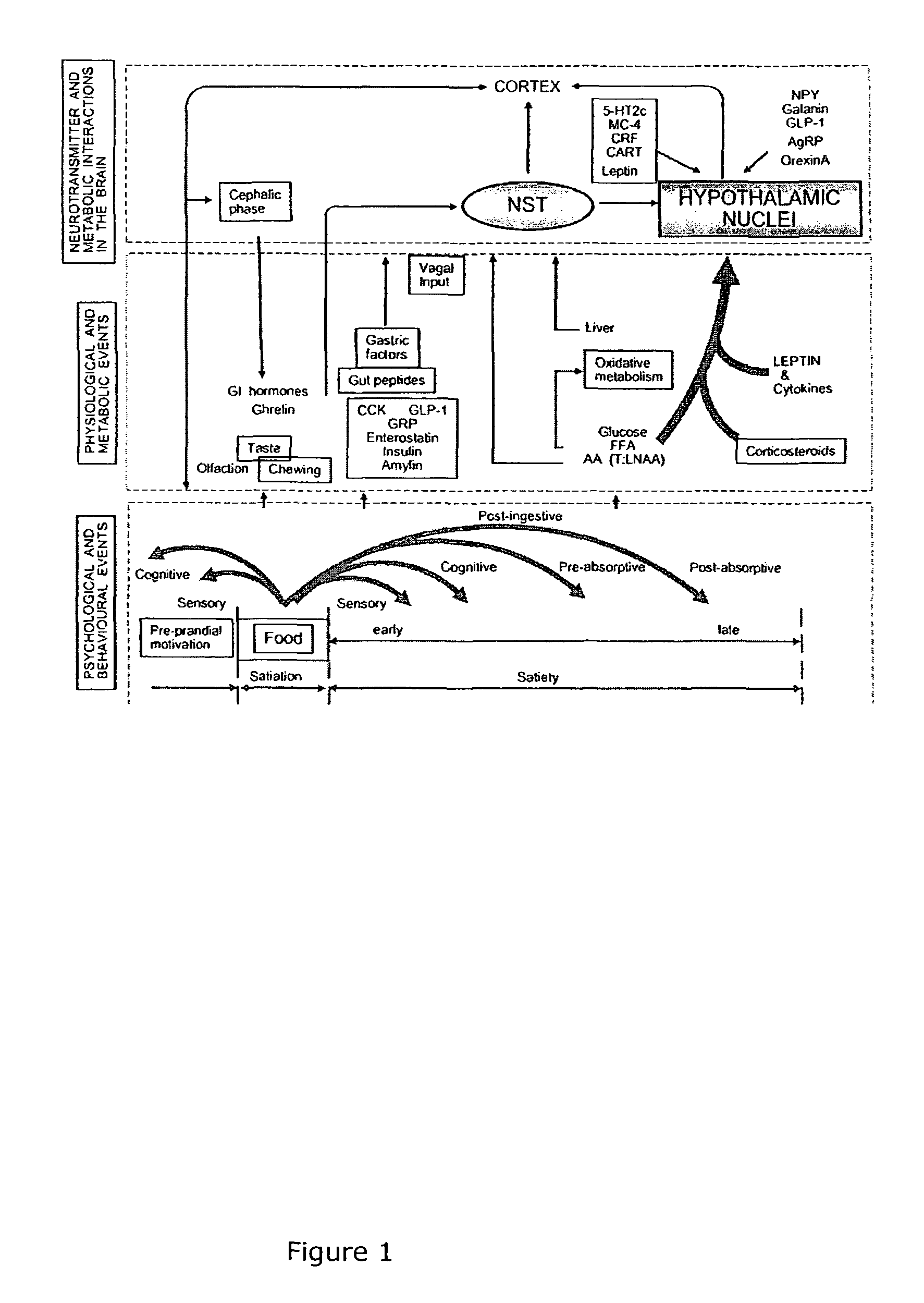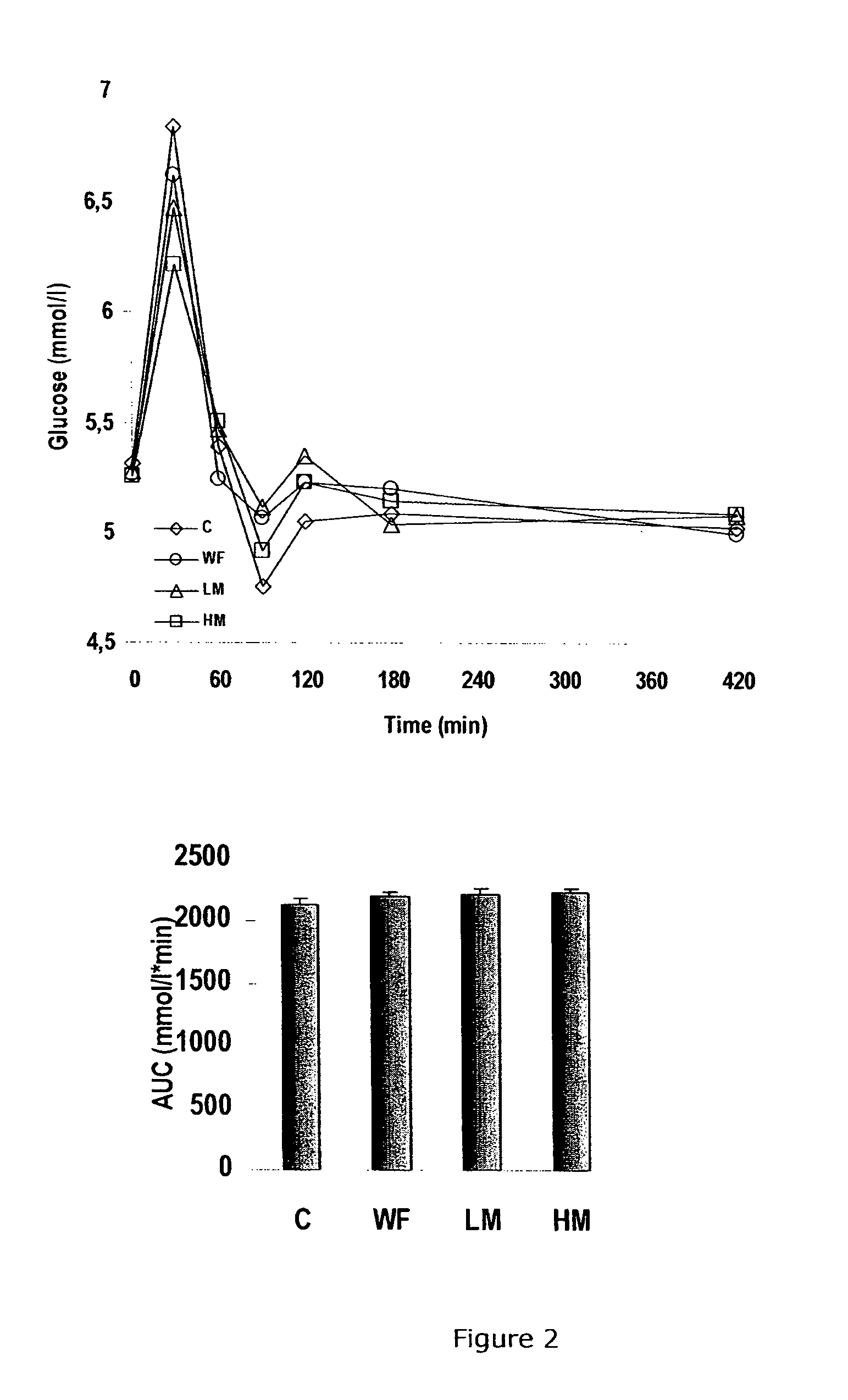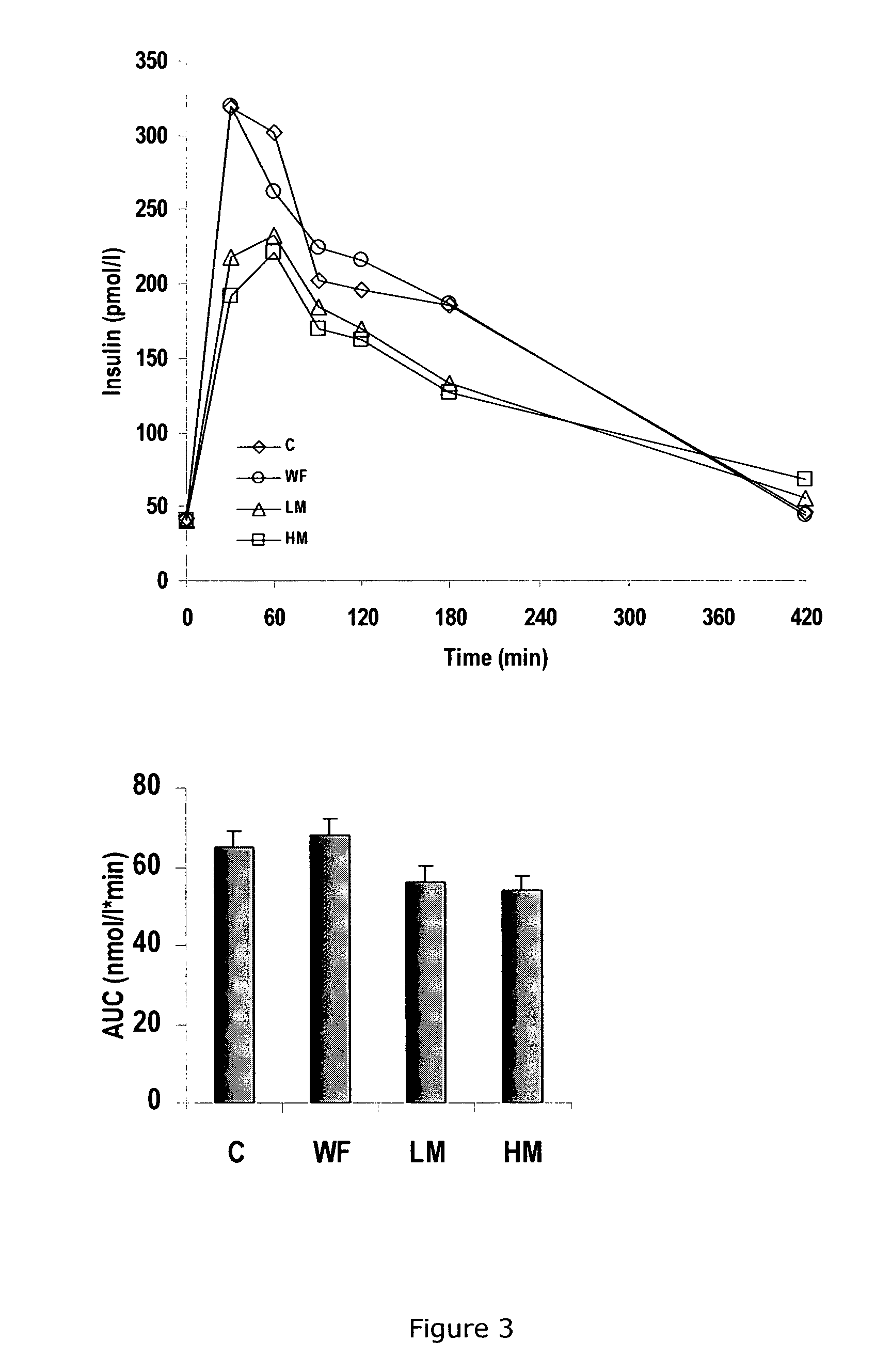Compositions and methods for increasing the suppression of hunger and reducing the digestibility of non-fat energy satiety
a non-fat energy satiety and composition technology, applied in the field of compositions and methods for increasing the suppression of hunger and reducing the digestibility of non-fat energy satiety, can solve the problems of increasing overweight and obesity, increasing the risk of overweight and obesity, and exceeding the energy expenditure of energy intake, so as to increase the reduction of prospective consumption and increase the appetite. the effect of suppressing hunger and increasing the reduction of appeti
- Summary
- Abstract
- Description
- Claims
- Application Information
AI Technical Summary
Benefits of technology
Problems solved by technology
Method used
Image
Examples
example 1
Rat Feeding Trial
[0189]1.1 Materials and Methods
[0190]Sixty male Wistar rats (200 g) were allocated to one of five different dietary treatments (A-E) (n=10 / group). The rats were fed the experimental diets for a total period of 21 days, of which the last 5 days they were housed in metabolic cages during a balance period. Faeces and urine was collected during the 5 d balance period and on days 1, 15 and 22, the rats were weighed. The rats were provided with 25 g feed / d (ad libitum) and food and water consumption was measured.
[0191]All diets were prepared to be equal in macronutrient composition, with 11% protein, 20% fat but differing in fibre content: group A (control) received no added fibres, groups B to D received 5% fibres in the diet from different sources (whole flaxseed, ground flaxseed or flaxseed mucilage, respectively) and group E received 10% fibres from flaxseed mucilage. Faecal samples were analysed for total fat and energy content (Table 1.1).
[0192]1.2 Results
[0193]Afte...
example 2
Human Intervention Study
[0201]2.1 Materials and Methods
[0202]In a randomized cross-over study, gross intake and faecal excretion of total and non-fat energy was measured in 11 young healthy men aged 24.6±2.7 y. During each 7 days intervention period, the subjects received a basal diet plus 300 g either ordinary rye bread or rye bread containing 6 g flaxseeds / 100 g. This is equivalent to an increase in daily fibre intake from flaxseed of 5 g. Faecal samples were collected on the morning on the 7th day of the intervention, and the daily excretion of faecal weight and energy was corrected to a theoretical daily output of transit markers which was given to the subjects on day 4, 5 and 6 (60 / d).
[0203]2.2 Results
[0204]Addition of flaxseeds to breads increased daily gross intake of energy from 14.7 MJ / d to 15.0 MJ / d (p<0.001). The amounts of apparently digested energy (kJ / d) was lowered when subjects consumed the flaxseed rye bread (p<0.001), and the energy digestibility was decreased from...
example 3
Human Test Meal Study
[0208]3.1 Materials and Methods
[0209]Study Design
[0210]Four different iso-caloric meals were tested in the 18 subjects according to a double-blinded randomized multiple crossover design. The subjects were randomly assigned to the sequence of the test meals and there was a wash out period of minimum 3 weeks between the four test meal days. Prior to each of the four meal test days the study subjects were instructed to follow a standardized fasting procedure which included abstention from alcohol and high-fat products such as potato crisps, high fat dairy products, and chocolate for 48 hours as well as abstention from hard physical activity for 24 hours prior tot the test meal. On the evening before the meal test they consumed a standardized low-fat evening meal no later than 8 pm providing 4.5 MJ consisting of a pasta dish, fruit juice and biscuits (22 E % from fat, 18E % from protein and 60E % from carbohydrates), which was prepared at the department. Furthermore...
PUM
| Property | Measurement | Unit |
|---|---|---|
| digestibility | aaaaa | aaaaa |
| weight | aaaaa | aaaaa |
| temperature | aaaaa | aaaaa |
Abstract
Description
Claims
Application Information
 Login to View More
Login to View More - R&D
- Intellectual Property
- Life Sciences
- Materials
- Tech Scout
- Unparalleled Data Quality
- Higher Quality Content
- 60% Fewer Hallucinations
Browse by: Latest US Patents, China's latest patents, Technical Efficacy Thesaurus, Application Domain, Technology Topic, Popular Technical Reports.
© 2025 PatSnap. All rights reserved.Legal|Privacy policy|Modern Slavery Act Transparency Statement|Sitemap|About US| Contact US: help@patsnap.com



